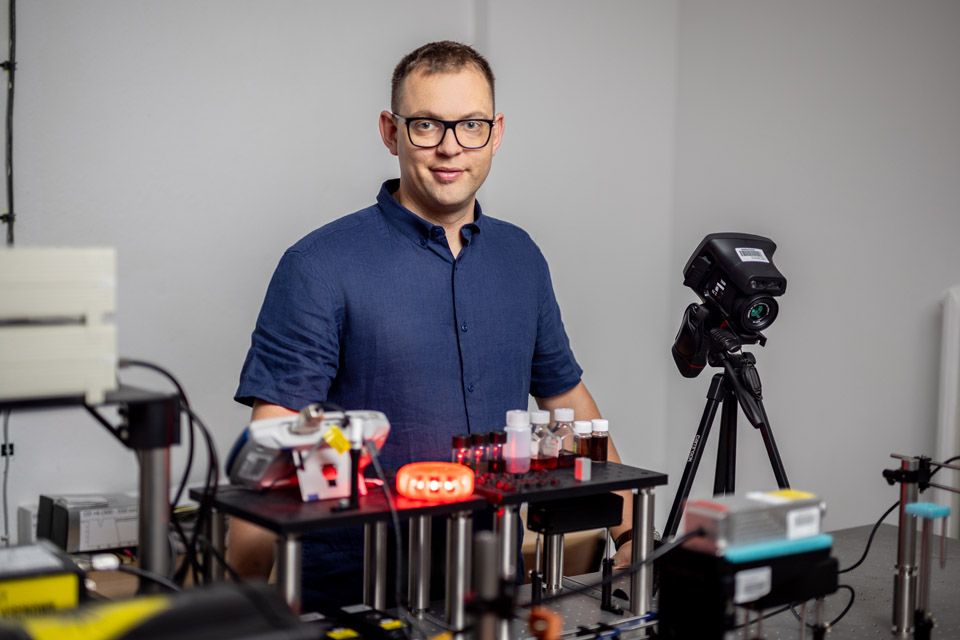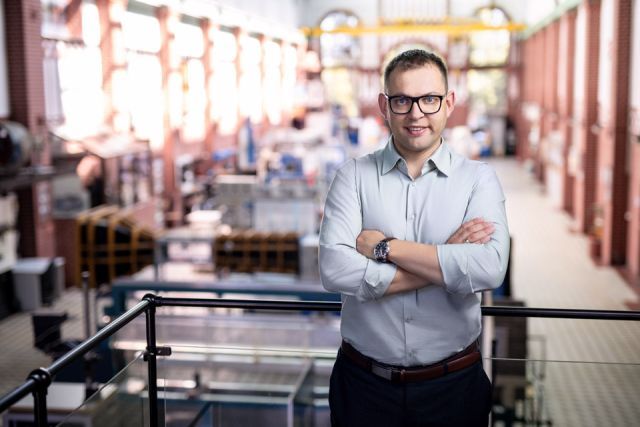Principal Investigator
:
Dr inż. Paweł Ziółkowski
Gdańsk University of Technology
Panel: ST8
Funding scheme
: SONATA 17
announced on
15 September 2021
Energy conversion is the process of changing energy from one form to another, and this is the main focus of the Laboratory for the Conversion of Electromagnetic Energy into Heat at the Institute of Energy, Gdańsk University of Technology. Energy conversion, due to its wide range of applications, takes places in our daily life but we rarely consider the significance of its various forms. In the nanoHEATgold project: “Shape and displacement optimization of gold nanorods in the killing chamber for the purposes of photothermoablation processes” we use the energy stored in electromagnetic spectrum (electromagnetic waves) to convert it into useful heat. To this end, we use specially tailored nanoparticles, which we feed into a dedicated chamber. Nanotechnology, including nanoparticles applications, creates new possibilities for scientific development. Gold nanorods are particularly favourable for their stability, biocompatibility and efficiency in photothermoablation. The use of lasers is also of utmost importance in the ongoing work, as it allows us to produce optical radiation of a specific wavelength, power and other parameters to irradiate the nanoparticles.
 Dr inż. Paweł Ziółkowski, photo by Łukasz Bera
The aim of the nanoHEATgold project is to study the heat and mass exchange process in various size chambers containing the target bacteria or viruses which would be subjected to photothermoablation using densely distributed gold nanoparticles in the shape of nanowires. The main task is to optimize the shape of the nanoparticles and the chamber alone in order to maximize the temperature and thus inactivate as many bacteria or viruses as possible. This happens once a certain limiting temperature is reached in the chamber, which is why it is important to combine two methods: experimental and numerical, to confirm the mode of the heat and mass transfer. Simplicity is the main advantage of the method, as it only involves the creation of a measurement and calculation system and analysis of the temperature field in the area under study. An important scientific goal is to develop appropriate mathematical models that correctly represent the behaviour of electromagnetic waves with gold nanostructures, in order to reflect the heat transfer to the environment and further to the entire germicidal chamber.
Dr inż. Paweł Ziółkowski, photo by Łukasz Bera
The aim of the nanoHEATgold project is to study the heat and mass exchange process in various size chambers containing the target bacteria or viruses which would be subjected to photothermoablation using densely distributed gold nanoparticles in the shape of nanowires. The main task is to optimize the shape of the nanoparticles and the chamber alone in order to maximize the temperature and thus inactivate as many bacteria or viruses as possible. This happens once a certain limiting temperature is reached in the chamber, which is why it is important to combine two methods: experimental and numerical, to confirm the mode of the heat and mass transfer. Simplicity is the main advantage of the method, as it only involves the creation of a measurement and calculation system and analysis of the temperature field in the area under study. An important scientific goal is to develop appropriate mathematical models that correctly represent the behaviour of electromagnetic waves with gold nanostructures, in order to reflect the heat transfer to the environment and further to the entire germicidal chamber.
Laser beam irradiation and its interaction with gold nanoparticles also allows for biological or even medical application in the treatment of various unusual organs (e.g., point tumours in the blood or internal organs (pancreas, liver)). Consultations and cooperation of medical application has been conducted with the Medical University of Gdańsk. The project allowed us to design experiments based on the measurement of temperature distribution on a selected surface, using a thermal imaging camera calibrated to appropriate temperatures. Several systems were tested by stabilized gold nanowires applied on laboratory glassware or directly on the germicidal chamber. A similar experiment was carried out in cooperation with La Sapienza University of Rome, resulting in scientific publications, including a comparison of measurements in the micrometer chamber with numerical analysis. The most important project result is the creation of a new laboratory at the Institute of Energy of the Faculty of Mechanical Engineering and Ship Technology of the Gdańsk University of Technology and new insights supported by valuable publications. An important achievement of the project is that it makes it possible to relate the influence of nanoscale parameters, such as the size and shape of nanoparticles, to macroscopic effects, the temperature field, and thus creates a potential to be used in the future.
Project title: Shape and displacement optimization of gold nanorods in the killing chamber in order to phototermoablation processes
Dr inż. Paweł Ziółkowski
Graduated from the Faculty of Mechanical Engineering at the Gdańsk University of Technology, where he has been employed since 2018. Between 2011 and 2023, worked at the Institute of Fluid-Flow Machinery of the Polish Academy of Sciences, where he defended his PhD in 2018. In 2015 and 2022, research internships at LEMTA in France and NTNU in Norway, respectively. Author of over 100 publications in Scopus. Involved in modelling of thermodynamic cycles and phenomena concerning diverse forms of energy conversion.


